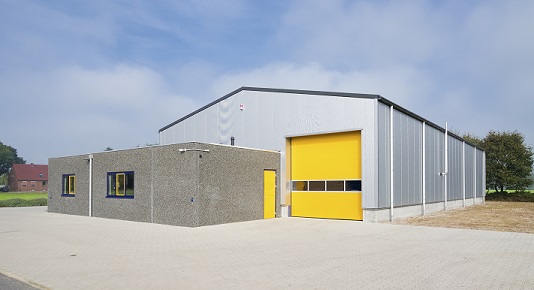
One of the first steps in creating a warehouse layout design is to identify possible warehouse storage systems. In this particular article we are going to focus on the warehouse planning process for determining which pallet storage systems to use when in a FIFO environment. In this article we will focus mainly on manual solutions, warehouse automation systems such as high bay AS/RS will be covered later in the series.
The starting place before any selection can take place is to analyse the inventory profile and to understand the volume throughputs on a SKU level. As a side note it is advisable that you carry out an inventory optimisation exercise and are at least clear on your future inventory policy before designing any new warehouse.
The key pieces of information to understand from this analysis are:
- Number of pallets stored per SKU
- Pallet throughput per SKU
Armed with this information a warehouse design consultant can then identify appropriate storage systems that could be used. We will now categorise the FIFO pallet racking systems that can be used by pallets stored/throughput per SKU:
Single Deep Adjustable pallet racking (APR)
Single deep APR racking is the most commonly used type of racking and this is due to the flexibility gained with beam height adjustability in addition to direct access to each individual pallet. Generally reach trucks are used as the MHE of choice for this type of racking giving a typical aisle width of around 3m.
Plus points
- Direct pallet access
- Good operating speed
- Relatively low racking cost
- High location utilisation i.e. 90% – 95%
- Good for case picking in ground locations
Negatives
- Overall warehouse floor utilisation is poor
Consider using for SKUs with <=5 pallet storage requirement for a range of throughputs
Single deep narrow aisle racking
Single deep narrow aisle racking offers better warehouse floor utilisation than standard APR racking. The space advantage is gained with the use of smaller operating aisles that can be
Plus points
- Direct pallet access
- Good operating speed
- Relatively low racking cost
- High location utilisation i.e. 90% – 95% (same as standard APR)
- High density storage potential
Negatives
- Capital cost of floor modifications
- Higher cost of MHE required
- Ground case picking
- Slower productivity than standard APR racking
Consider using for SKUs with >4 pallets storage requirement
Pallet live storage
Pallet live storage is used when you have a significant number of pallets per SKU with a high throughput and you want to maintain FIFO. The racks are split into lanes with only one SKU per lane. Each rack lane has one in feed and one out feed there a sloping incline on conveyor rollers from the in feed down to the out feed.
Plus points
- Direct pallet access
- High operating speed
- Good for case pick ground locations
- Highly dense storage that is FIFO compliant
Negatives
- High capital cost of racking
- Requires very standardised pallets of consistent quality
- Lower location utilisation i.e. 70%
Consider using for high throughput and high number of pallets stored per SKU
Take care to evaluate the different options against your inventory profile and consider a mixture of racking when appropriate.
In the next article one of our warehouse consulting team will focus on manual solutions to improve storage density.
Please click here to contact one of our logistics consultants














